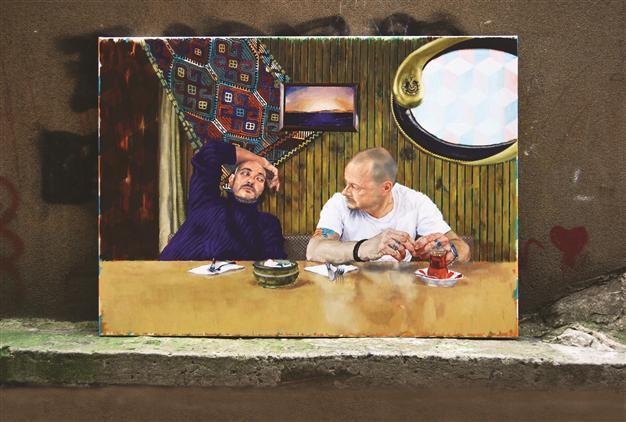‘Of Dust and Water’ explores Istanbul’s contrast and magic
ISTANBUL - Hürriyet Daily News

Banality in Şişli.
Malaysian-Chinese artist Leon Leong’s portraits reflect the outer worlds of the models, while his Istanbul scenes show a new way of approaching Istanbul’s inner world and its society. “For me Istanbul means a controversy, but on the other hand, this controversy gathers in one place so well that it almost creates a new approach,” he said.Leong took a long time to find his way to art. He had always known he had a talent for creating art, but he started his education in advertising. He was very successful in his field, but a deeper voice always drove him to create art. His visit to Istanbul changed his life, and he started to paint Istanbul and scenes of the city.
The combination of West and East, of freedom and dependency form the basis of his paintings of Istanbul. “I have painted Istanbul’s land with the color of dust. At the base of it all we can say we all come from dust. But in Istanbul the Bosphorus washes it all away.” His Istanbul paintings series, titled “Of Dust and Water,” makes the audience look at Istanbul not from the Anatolian or European side only, but as a whole. He said that was how Istanbul becomes very attractive, the combination of East and West, the combination of controversies and how they create a whole extravaganza. “Turkey, or Istanbul, is a land of contrasts. Seen from afar, the city is dust brown while the water is extreme blue. Burly rugged men walk side by side with demure porcelain-skin women. The logical coolness of the West co-exists with the sentimentality of the East.”
According to Leong the country straddles extreme opposites without homogenizing the differences in between. Leong also takes on the culture of the city and the country because he thinks that the rich culture of the city celebrates the complexity and the multiplicity.
His painting series “Of Dust and Water,” was developed along vertical and horizontal lines. A man trying to stand upright on his feet is pulled and stretched sideways by the environment. The painting process adopts a constant shift of emphasis between foreground and background – a battle between him and his environment. Leong has taken on the controversy theme once again in his newest painting, “Banality in Şişli.” Two men silently dealing with a controversy seem to be having a problem, which, combined with a Turkish carpet concept, raises the question of how culture affects us in the city and how to approach communication. “This is almost magic,” Leong said.
Not only Istanbul but the whole Turkey
Not only Istanbul but all of Turkey is reflected on Leong’s canvases. As an artist, Leong also likes to add a pinch of orientalism to his works, but this orientalism never overshadows his aim. Leong’s main aim is to paint people and their families, as well as their relationships with other people, because this is the most interesting thing to discover in Turkey, according to the artist.
Leong paints family portraits, people walking in the streets, shadows, people having conversations and much more. His series of paintings titled “Shadow Dancers” consists of people walking at intersections under intense light and shadow. At this point, Leong takes on a literary approach and instead of using a light imagery effect he chooses to use shadows and the darkness. “Because darkness is not a bad thing.”
Leong has also painted oil wrestlers in Edirne. This is a new discovery, according to Leong. With these scenes of wrestlers he once again addresses Turkish culture and also opens a new way of looking at things in Turkey. “Everyone in the end becomes a whole; they become kardeş [siblings],” Leong said.
The upcoming exhibition of Leon Leong is organized and curated by Banu Dicle, a Turkish art entrepreneur who also founded SİMİT, an art foundation in Europe.
















